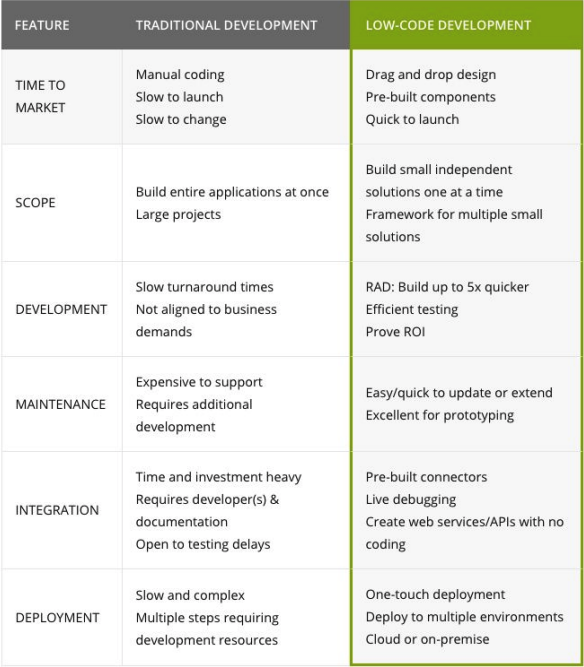Low-code development is the new quick win for an over-worked IT department

The low-code, or rapid application development platform (RAD), is growing in popularity among busy IT teams. The reality is that organizations of all sizes must find new ways to increase efficiencies, and manual coding is simply too expensive and time consuming. IT managers need to find solutions to problems quickly -- and platforms like this enable them to create integrations and automate basic processes in minutes -- all of which saves time and money, and frees them up for higher-value strategic work.
Low-code development platforms like Linx are designed to help businesses integrate and automate processes without writing reams of code. The goal is to eliminate the time-consuming drudgery of rewriting code each time you wish to do something relatively simple like publish a web service, extract data, schedule an automated task, parse CSV files etc.
The answer to your IT headache
Such a platform is designed to reduce the burden on frazzled IT managers, who have enough to worry about. Most teams are overwhelmed and under-resourced. Mounting pressure to deliver solutions to ever-changing business needs, and the hassle of integrating legacy systems with newer cloud applications is an IT manager’s nightmare. And the biggest limitation they face? Yup, it’s that everything is dependent on completing mountains of manual work.
If this sounds familiar, you aren’t alone. A recent study of 4200 IT managers found that:
- 66 percent of companies fall behind schedule when deploying new IT capabilities
- 49 percent plan to increase their investment in custom development
- 61 percent are adopting new IT philosophies and strategies to meet this need
We put the two approaches side by side so that you can compare them easily. Note that low-code tools are not designed to build large applications, but to accelerate smaller tasks such as creating, exposing and consuming web services, or connecting legacy systems and SaaS apps.

Win - Win - Win
There is no mistaking that the millennial outlook of "I want it now!" has moved into business and digital speed has never been more important. Add to the now prerequisite for a successful product: engaging, responsive to customers across different channels, and adaptable to existing services based on shifting competitive drivers, businesses face huge demands for developers and development power to get this done.
Low-code platforms offer trained IT pro’s to supplement a lack of experience or capacity whilst professional coders use it to expedite design and deployment. And don’t forget the new breed of citizen developer, the analyst or business unit owner who can use the tool to do it themselves, relieving backlogs -- or removing entire projects -- from on an overworked IT team.
Now who wouldn’t want that?
Image credit: Aleksandr Pobedimskiy/ Shutterstock
 Anthony Morris, Head of Marketing at Twenty57, isn't a developer, but loves technology. His background includes marketing and product management in the software and IT industries. In his current role, he is focused on expanding Twenty57's vision to become a global leader in providing enterprise software, software integration and financial software platforms -- simply put; making technology simply for everyday users.
Anthony Morris, Head of Marketing at Twenty57, isn't a developer, but loves technology. His background includes marketing and product management in the software and IT industries. In his current role, he is focused on expanding Twenty57's vision to become a global leader in providing enterprise software, software integration and financial software platforms -- simply put; making technology simply for everyday users.
